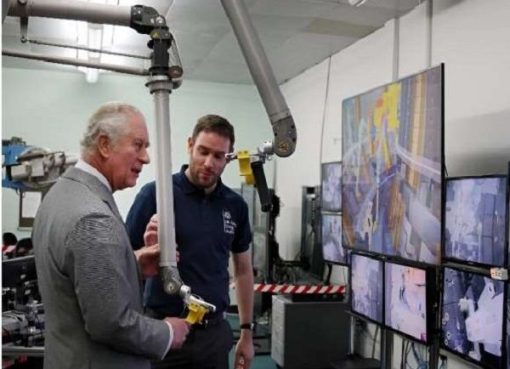While the ‘Cities Race to Resilience’ campaign aims to accelerate action against climate change and ensure commitment to achieving specific goals, many resilience initiatives are already under way in cities all around the world.
This campaign is running alongside the Race to Zero initiative, which launched in January 2021 and has 733 cities currently signed up. The hope is that the two campaigns working together will ensure the greater resilience of approximately four billion people and ensure emissions reduction goals are met by 2030.
International effort
Race to Resilience Commitments
• Integrating climate change adaptation and resilience in all aspects of urban planning and carrying out a community-wide climate risk and vulnerability assessment that specifically addresses the needs of the most vulnerable communities.
• Using available climate-change knowledge and scientific evidence in decision-making and creating interim targets and milestones as part of a long-term commitment for citywide climate action.
• Taking immediate action in one of the resilience areas specified by COP26: Buildings, Digitalisation, Energy, Food Systems, Governance and Community Engagement, Nature-Based Solutions, Risk and Vulnerability Planning, Social Equity, Urban-Rural Linkages, Waste, and Water.
• Reporting initial commitments in the above categories by COP26, and making annual progress reports on achievements.
What does competing in the race actually look like when cities will have to take very different approaches to meeting the goals of the campaign? Rather than competing against each other, the race is really against time and temperature rise, so that cities remain on track for meeting the goals they need to if they’re to limit the impacts of climate change.
Depending on elements such as their local climate, population demographics, and whether they’re primarily focused on manufacturing, agriculture, services or tourism, cities will need to aim for very different goals.
Resources
Resilience Partners
A wide range of expert knowledge and resilience planning resources is available from the following campaign partners.
• C40 Cities
• Global Covenant of Mayors for Climate & Energy (GCoM)
• Making Cities Resilient 2030 (MCR2030)
• Resilient Cities Network
• World Resources Institute (WRI)
• World Wide Fund for Nature (WWF)
Dublin, Republic of Ireland
In a €10m (£8.6m) project funded by the EU, Dublin is serving as a Coastal City Living Lab as part of a project called Smart Control of the Climate Resilience in European Coastal Cities. The city is a testbed for climate resilience solutions focused on coastal cities, and measures for managing rising sea levels, coastal erosion and extreme weather events are being developed and tested there.

The project launched in July 2021 and is working with 28 partners to find solutions to the issues Dublin faces, many of which are due to flooding. Keeping transport systems running is a major focus, as currently one of the main train lines, which runs along the coast, is regularly flooded. A big element of this project is to develop and test smart technologies and hybrid nature-based solutions (NBS), particularly around early warning systems and prevention, and also to explore the potential for these technologies to be deployed in other parts of Europe.
Glasgow, Scotland
Climate Ready Clyde (CRC) is Glasgow City Region’s programme for developing resilience. CRC has developed a ‘Theory of Change’, setting out a long-term vision for the city, what steps will be needed to deliver on the vision, and principles to guide them as they set about achieving the goals.

Flooding is an issue for Glasgow too, and one of CRC’s main projects is Clyde Rebuilt, which brings together community groups, local councils, universities, businesses, and government agencies to develop resilience tools and processes that will help limit damage to homes, commercial and public buildings, roads and railways, and stresses to hospitals and emergency services caused by more extreme weather.
Thessaloniki, Greece
Thessaloniki is an important metropolitan region with an active port, a respected university, and a robust tourist industry. But the economic and political crises that have hit Greece in recent years mean the city has suffered from high unemployment due to a shrinking manufacturing sector, and this lack of opportunities for young people has increased social needs, while resources to provide services have decreased. The city has a dense urban structure with very little open or green space, although it does have a 7km waterfront.

New projects are being implemented to upgrade infrastructure to make the city more climate resilient and drive economic recovery.
Community members are being involved in planning processes so that they can work collectively to share responsibility, resources, opportunities and results and feel that they are a part of their city’s recovery. Thessaloniki is also using this approach to build response plans for natural disasters, climate crises and resilience planning.
Ulaanbaatar, Mongolia
The capital city of Ulaanbaatar is building 10,000 affordable green homes, which will cut carbon emissions by 200,000 tonnes a year, improve air quality and provide better housing for 35,000 city residents. The homes will all have rooftop solar panels, better insulation, and improved connectivity to the central energy grid, water supply and sanitation services. The homes will be sited within a new, resilient eco district.

Atlanta, USA
This cosmopolitan city has a diverse cultural population, high levels of education, and the third-largest concentration of Fortune 500 companies in the US. But it also has a failing transportation system, which causes traffic congestion, poor air quality and barriers to social cohesion. A lack of affordable public transport is leading to growing inequality, and stops the city’s poorest communities accessing food centres and economic opportunities.

The city’s dependence on highways and vehicle ownership makes infrastructure a primary concern. A disaster affecting a major highway or bridge could prevent emergency responders from reaching areas affected by electrical outages or flooding. The city is working to mitigate the potential impact of resilience shocks such as infrastructure failure through the creation of an Emergency Preparedness and Management group. It’s also transforming public transport with an investment of $173bn (£125bn) over the next 30 years, which will see the development of a light railway, bus lanes and additional routes, cycle lanes and incentives to get the city’s residents carpooling.
Montevideo, Uruguay
Uraguay’s capital city, Montevideo, joined the 100 Resilient Cities Network in 2016 and has since started work on a long-term transformation project for one of its most vulnerable neighbourhoods, the Pantanoso basin, which previously had little access to public transport and suffered from high levels of air pollution, environmental degradation, and social deprivation. Pantanoso has now been converted into a ‘Resilience Laboratory’ to help its residents attain a better standard of living and enable the area’s communities to manage the environment and prepare for a changing climate.

The plan for the Pantanoso basin includes development of wetlands to minimise flooding, building of new housing away from the flood plains, new transport links to help build social mobility, and an intervention plan to engage local residents and get them involved in environmental improvement projects.
While the Race to Resilience is a way to focus resilience mobilisation and hopefully speed it up, cities the world over are well aware of the challenges they face and are already stepping up to meet them head on.
Buenos Aires, Argentina
Buenos Aires faces significant and growing challenges from social and economic inequality. The city’s informal settlements now house over 250,000 residents and changing weather patterns are resulting in increased heavy rainfall and flooding, which cause significant physical and economic loss. Flooding also puts pressure on the urban infrastructure, which causes power, water and telephone outages that, in turn, hamper recovery.

The city has developed a new Hydraulic Planning Master Plan, with significant investments in the urban drainage system, while a Hydrometeorological Monitoring Network aims to increase preparedness and reduce emergency response times.
Samoa
This small island nation is dependent on international marine trade through its harbour, but its port operations are constrained by seasonal wave patterns. What’s more, the current breakwater can’t stand up to rising sea levels and worsening storms, so a project is under way to strengthen it using local materials, and new stormwater drainage will decrease vulnerability to flooding.

In addition, a new terminal is being built to increase the number of boats that can dock. This, together with a multi-hazard preparedness plan, aims to improve economic resilience and mitigate disruption to port operations in the aftermath of natural disasters.
Source: E&T










